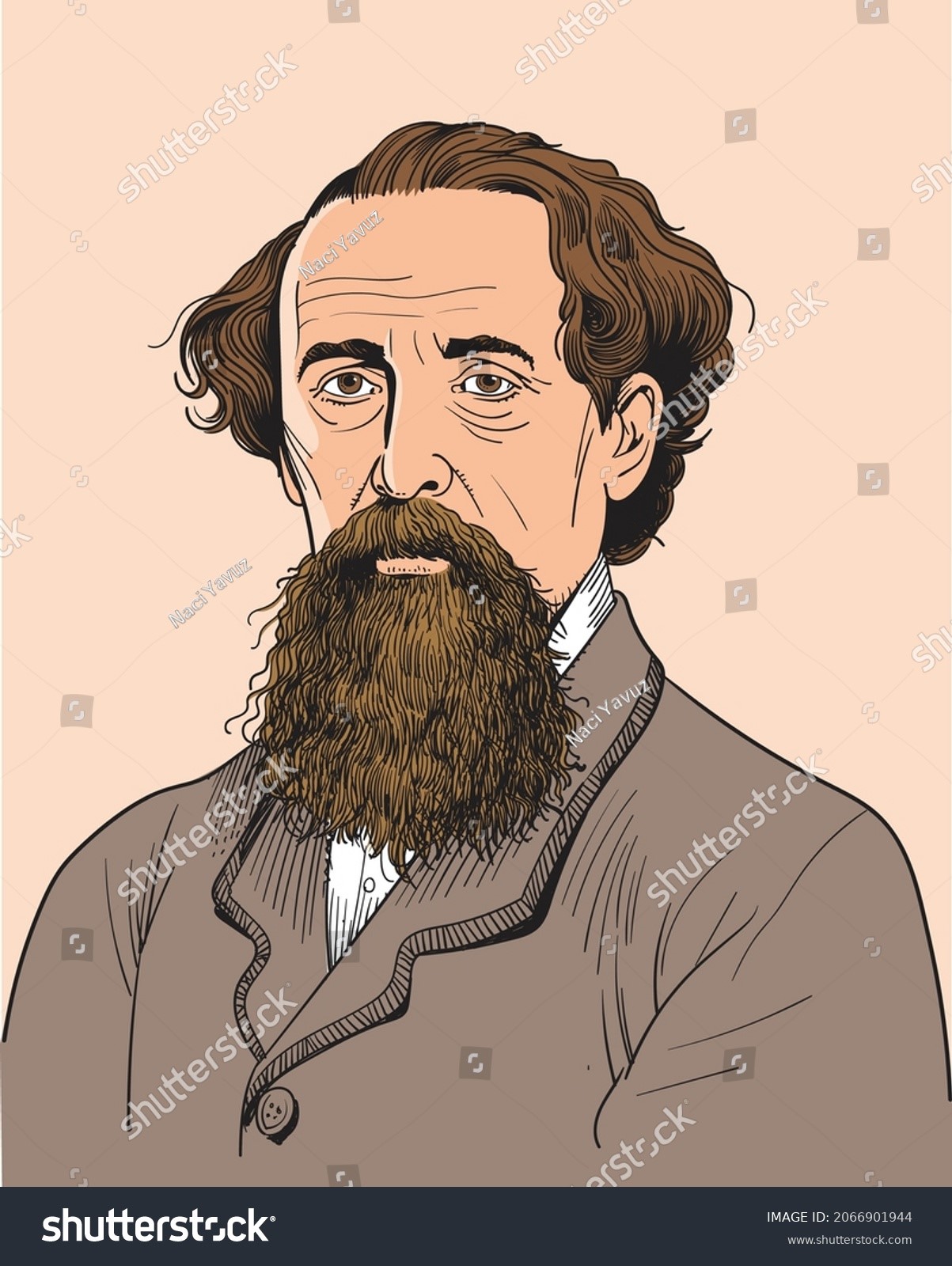Introduction
Throughout the nineteenth century, Charles Dickens, a British editor and writer, released a wide variety of works, including novels, short stories, comic books, and novellas. To break into the publishing industry, Dickens created his own self-published drawings and humorous comics for periodicals. His dark portrayals of London’s poor in the Victorian era are famous for highlighting economic inequality and stimulating discussion amongst readers.

Charles Dickens
Early Life
When Dickens was young, he moved away from Portsmouth. His boyhood years in Chatham (1817-22) were the happiest, and he often wrote about the town. From 1822 to 1860, he called London home. In 1860, he made the permanent move to Gad’s Hill, a rural house not far from Chatham. One of his grandfathers was a criminal, and the other had worked as a domestic worker, but together they had built a middle-class status for themselves just recently.
Charles Dickens’ father had a solid income as a clerk, but he was a constant source of contention for his family. As Charles’s father was in jail for debt, the family was unable to afford for him to continue school, thus Charles was kicked out and sent to do physical labour in a factory in 1824. These kinds of shocks did a lot of damage to Charles. He left school for a while when he was 15, but he eventually went back.
He worked as a law firm clerk at first, then as a court shorthand reporter (gaining experience in the legal system that is cited repeatedly in the novels), and finally as a newspaper and legislative reporter, just like other members of his family. Throughout this time, he acquired an intense aversion to authority figures and the law, as well as a deep appreciation for journalism.
Dickens’ Work
Dickens experienced early success; at the age of 25, Pickwick Papers, his debut book, became a bestseller and established him as one of the best authors of the day. Readers anticipated that all of his novels would follow this pattern due to the fact that it is a wildly comic book with almost any shadows.
Many readers and pundits were horrified by Dickens’ progressively pessimistic vision of his social culture and of the essence of man as he aged. It was claimed that “A Tale of Two Cities” contained little to no comedy.
Dickens took seriously the unfavourable reactions that his darker novels received from readers because he was always worried about making money with his writing. He composed Great Expectations with the intention of addressing their dissatisfaction.
His literary reputation declined after his passing, and his books were no longer considered seriously. George Meredith, a novelist, thought they lacked intelligence:
Dickens’ writings were still widely read, but his reputation as a writer was becoming overshadowed. His books were frequently thought of as being suitable for young readers. From 1880 to the beginning of the 20th century, Russian authors gained popularity and were widely thought to be better than Dickens.
Dickens’ Style
The most influential, Charles Dickens, was an English author of novels during the Victorian era. His work was appealing to both the basic and the sophisticated, earning him a wide following. He became one of the major figures in 19th-century writing because of the breadth, compassion, and intellect of his understanding of society and its flaws.
He wasn’t merely a great comedian; he was also the most humorous English author. His works were supplemented by the breadth, compassion, and intellect of his understanding of his society and the flaws in it, making him one of the major literary figures of the 19th century as well as a powerful representative of his generation’s conscience.
Dickens Influence
Dickens’s writing and serial publication of his books made it even more challenging to meld the diverse a variety of tones and textures he used in each novel, which frequently featured multiple complex plots involving dozens of characters.
Dickens was an expert at using high humour, using satire, puns, wordplay, and an odd way of describing characters that both made fun of his own works and gave them life and personalities of their own.
Dickens worked hard to create books that were both enjoyable and moving. He made a concerted effort—sometimes too much effort—to strike a compelling mix between humour, sorrow and mystery.
Dickens’ visual features not only accurately depict how things appear, but they are frequently rich in symbolic meaning, reflecting underlying realities. Dickens’ deep meaning in his settings and people is missed by those who think of him as being shallow. Dickens also had a great ear for speech patterns; no other writer in the 19th century did a better job of capturing accents and peculiar verbal tics.
Conclusion
Many of C. Dickens writings are taught to young readers, and his work continues to have an impact on pop culture and literature. Dickens felt novels had a moral purpose—to evoke readers’ inner moral sensibilities and urge righteous behavior—even though he was aware of what his readers wanted and was eager to sell as many of his writings as he could.
Frequently Asked Questions
1. How did Dickens impact todays literature?
Ans. However, it’s possible that he had the most impact on how widely read novels have become. Dickens’ books were the first “blockbusters” in publishing, and in many respects, he is to blame for the obscene number of novels being released today.
2. How was Tobias Smollet related to Charles Dickens?
Ans. Tobias Smollet, a poet from Scotland and novelist who produced picturesque works like Roderick Random, had an impact on Charles Dickens (Citelighter). Dickens was inspired to concentrate on description as a result.
3. How would you describe Charles Dickens’ writing style?
Ans. Dickens was an expert of great humour, and his techniques included satire, puns, wordplay, and an odd way of describing characters that made fun of his own works while also giving them life and a distinct personality.